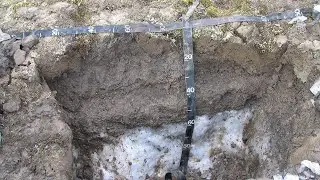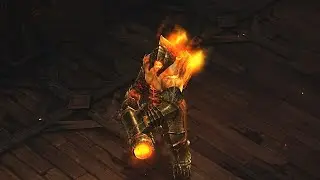18th Street Gang: Untold History of Barrio 18 (Los Angeles LA/El Salvador) CECOT Prison
💚 If you enjoy our content, support us on:
https://conscioushistory.backme.org/ 💚
Explore the untold history of the 18th Street Gang, also known as Barrio 18, in our latest documentary: “18th Street Gang: Untold History of Barrio 18 (Los Angeles LA/El Salvador).
This in-depth analysis uncovers the origins of Barrio 18 in Los Angeles and its expansion into El Salvador, where it became one of the most influential transnational organizations. We examine how migration, socio-economic factors, and urban conflicts played a role in its rise—just like other well-known groups, including the Crips, Bloods, Clanton 14, La Eme (Mexican Mafia), and MS-13 (Mara Salvatrucha).
Key Topics Covered in This Documentary:
• The rise of the 18th Street Gang and its transformation from Clanton 14
• 18th Street Gang origins in Los Angeles and its connection to South LA gang history
• The influence of Chicano culture and cholo style in shaping its identity
• Inside El Salvador’s mega prison, CECOT Prison—where thousands of 18th street gang/Barrio 18 and MS-13 members are held under President Nayib Bukele’s gang crackdown. But is Bukele a hero, or does his iron-fist approach come at the cost of human rights violations? We examine prison overcrowding, gang repression, and the deep impact on families and communities.
• The separation from Clanton 14 and the ongoing rivalry with MS-13 (Mara Salvatrucha)
• The effects of the Salvadoran Civil War on the rise of gangs in Central America
• How did a Los Angeles gang take over Central America? From the Rampart District in Los Angeles (LA) to its expansion into El Salvador, Guatemala, and Honduras
Subscribe for more in-depth investigations into history, global conflicts, and the impact of street culture!
#surenos #cecot #chicano
⌛ Timeline: 18th Street Gang: Untold History of Barrio 18 (Los Angeles LA/El Salvador)
0:03 Introduction: CECOT – El Salvador’s High-Security Mega Prison
Lines of prisoners are herded into El Salvador’s CECOT, the high-security mega-prison built under President Nayib Bukele as part of his gang crackdown. Many of them are covered in 18th street gang tattoos, marking them as members of the 18th street gang/Barrio 18.
This is the untold story of the 18th street gang/Barrio 18, one of the most feared street gangs in the world.
1:11 The Beginning of Street Gangs in Los Angeles
In Los Angeles, street gangs like the Crips and the Bloods began to form. In the Rampart District, near 18th Street, a group called Clanton 14 came together. Proud of their Mexican/Chicano heritage, they wanted to build their own support system.
The history of South LA gangs – how 18th street members/Barrio 18 came into contact with La Eme, the Mexican Mafia, in California’s prison system and wanted to create a real brotherhood. How the 18th street gang was formed. At first, they called themselves Clanton 18th Street, but over time, they broke away from Clanton 14 and evolved into their own organization – the 18th Street Gang (How the 18th Street Gang started)
3:12 The Rise of the 18th street gang in Los Angeles (LA)
How did young men become members of the 18th street and why did people join the 18th street gang/Barrio 18? The influence of Chicano culture, cholo fashion and Vatos Locos street life played a huge role. Bukele’s El Salvador mega-prison.
4:26 The Salvadoran Civil War and Its Aftermath
The Salvadoran Civil War forced many people to flee to Los Angeles,
How did the rivalry between MS13 (Mara Salvatrucha) and the 18th street gang start? And what were the effects on the streets of Los Angeles (LA)? (MS-13 vs Barrio 18) As the Los Angeles (LA) street gangs grew in power, The US government felt trapped and started using RICO laws to crack down on organizations like MS-13 and the 18th street gang/Barrio 18, next to this they deported gang members back to Central America, which fueled the growth of gangs in El Salvador, Guatemala and Honduras
6:45 The Impact of Mass Deportations
In these poor countries, young boys saw these deported gang members as powerful figures and quickly joined groups like MS-13 or the 18th street gang (Barrio 18) Soon, these gangs gained significant power across Central America. (Latin American gang wars)
7:50 The Government’s Response
The government in El Salvador struggled to contain the growing influence of MS 13 (Mara Salvatrucha) and the 18th Street Gang (Barrio 18). El Salvador’s president, Nayib Bukele, launched an all-out war against MS-13 and Barrio 18. (Nayib Bukele gang crackdown) His government built CECOT, (El Salvador’s most dangerous prison, El Salvador mega prison explained, CECOT prison explained) a massive prison designed to hold thousands of gang members.
8:25 The Controversy Over CECOT
Today, the debate continues: is CECOT an effective solution to gang violence, Is Bukele a hero?, human right violation, gang repression, prison overcrowding, family impacts, or is it an inhumane prison that violates human rights? CECOT Prison 18st







